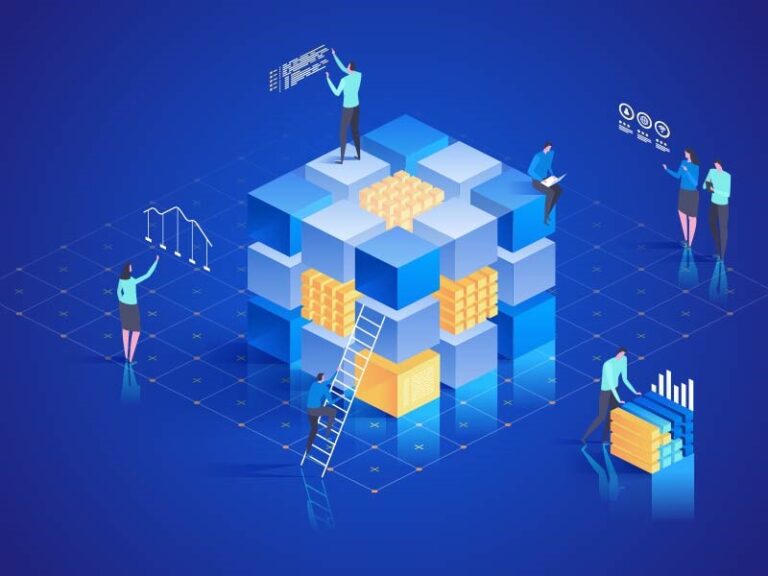What is a Database? Basic Concepts, Types and Usage Areas
Database is one of the cornerstones of organizing and managing information in the modern world. In today’s technology-driven world, everyone from businesses to individual users needs to store, process and access data effectively. So, what exactly is a database? A database is a digital storage system that stores information in an organized, systematic and accessible way. These systems ensure the security of the data while at the same time providing fast access and analysis. Whether it’s customer information for an e-commerce platform or patient records for a hospital, databases play a critical role in every aspect of our lives.

Database Concept and Importance
A database is a collection of data organized in a structured way. This data is usually organized in tables, rows and columns. Its main purpose is to store large amounts of information in an organized way, manage it and easily access it when needed. For example, in an online store, customer information, order history and product stocks are kept in a database. This system prevents data loss, increases security and provides a suitable basis for analysis.
The importance of this technology is especially evident in data-driven decision-making processes. Thanks to these systems, businesses can analyze customer behavior, optimize their operations and make strategic plans. In addition, databases provide reliability with features such as backup and recovery. Combined with cloud technologies, it offers advantages such as remote access and flexibility.
Database Management Systems (DBMS)
A database management system (DBMS) is software used to create, manage and query databases. These systems make it easy for users to access, add, update or delete data. Examples include popular DBMSs such as MySQL, PostgreSQL, Oracle Database and Microsoft SQL Server. These tools optimize the performance and ensure the security of databases.
The main features of a DBMS are:
Data Integrity: Ensures that data remains accurate and consistent.
Security: Offers protection against unauthorized access.
Query Language: Enables fast processing of data with languages such as SQL.
Backup and Recovery: Provides backup mechanisms to prevent data loss.
DBMS are indispensable, especially in the management of large databases. For example, a complex DBMS is essential for a bank to keep track of customer transactions.
Types of Database
Databases are divided into various types according to their intended use and data structure. The most common types of databases are:
1. Relational Databases (RDBMS)
Relational databases organize data into tables and establish relationships between these tables. They are managed with SQL (Structured Query Language). Systems such as MySQL, PostgreSQL and Oracle belong to this category. The main advantages are the following:
Data is organized and structured.
Easy querying with SQL.
Provides high performance in large-scale applications.
Usage Areas: E-commerce sites, customer relationship management (CRM) systems.
2. NoSQL Databases
NoSQL databases are designed for big data and flexible data models. These non-relational systems are particularly suitable for working with unstructured data. Systems such as MongoDB, Cassandra and Redis fall into this category. The types are as follows:
Document Based: Stores data in JSON or BSON format (e.g. MongoDB).
Key-Value Based: Works with simple key-value pairs (e.g. Redis).
Column-based: Optimized for big data analytics (e.g. Cassandra).
Graph Based: Used for modeling relational networks (e.g. Neo4j).
Usage Areas: Social media platforms, real-time analytics.
3. Cloud Based Databases
Cloud-based databases enable data to be stored and managed over the internet. Platforms such as Amazon RDS, Google Cloud SQL and Microsoft Azure SQL are examples of this category. Their advantages are
Flexible scaling.
Low initial cost.
Possibility of remote access.
Usage Areas: Start-ups, global applications.
4. Time Series Databases
Time series databases are optimized for storing timestamp-based data. Systems such as InfluxDB and TimescaleDB stand out in this field. Ideal for sensor data, financial data and IoT applications.
5. Object Oriented Databases
Object-oriented databases work in harmony with object-oriented programming. Data is stored as objects and classes. Systems like ObjectDB are examples of this category.
Database Usage Areas
Databases are used in a wide range of different industries:
E-Commerce: Product catalogs, customer information and order management.
Health: Patient records, treatment histories and medical data.
Finance: Transaction records, account management and risk analysis.
Education: Student information, exam results and course schedules.
IoT: Collection and analysis of sensor data.
What to Consider When Choosing a Database?
Choosing the right database is critical to the success of your project. The following points should be considered:
Data Type: Structured or unstructured?
Scalability: Will the database be able to maintain performance as the system grows?
Budget: Open source or a commercial solution?
Security: How is data security and privacy ensured?
Integration: What is the compatibility with existing systems?
Ultimately, a database is the fundamental way to manage information in an organized, secure and accessible way. From relational databases to NoSQL, from cloud-based systems to time series databases, different types respond to various needs. Which database you choose depends on the requirements and goals of your project.


